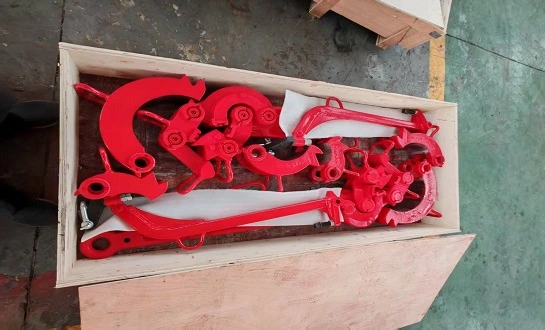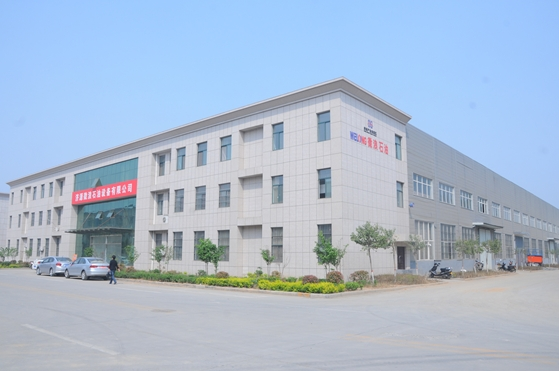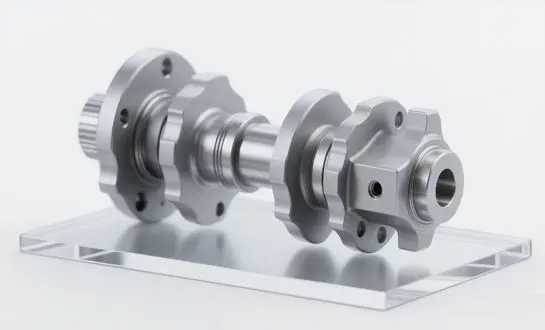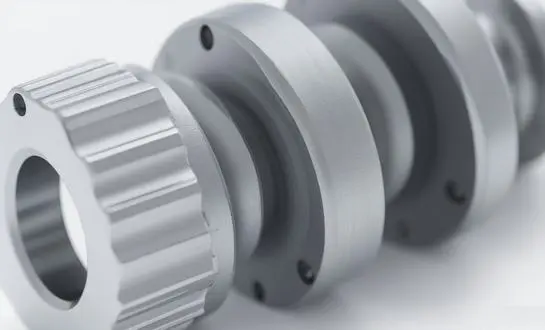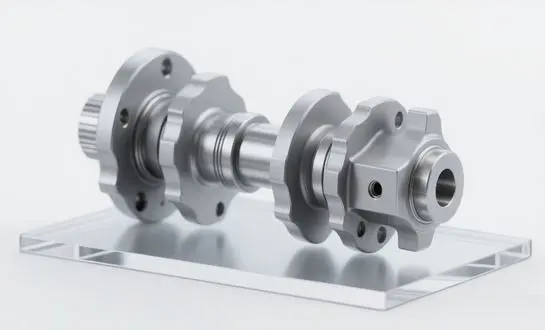Safety First: Manual Tongs vs. Hydraulic Options
When it comes to oilfield operations, safety is non-negotiable. Manual tongs, despite their traditional design, offer several safety advantages that make them a viable alternative to hydraulic options in certain scenarios.
Reduced Complexity, Increased Reliability
The mechanical construction of manual tongs is less complex than that of hydraulic tongs. There are fewer possible sites of failure as a result of this simplification, which improves dependability. In settings where hydraulic systems might be vulnerable to leaks or malfunctions caused by severe weather or other hostile circumstances, manual tongs continue to work with little chance of unforeseen failures.
Enhanced Control and Precision
Manual tongs provide for a great deal of control and accuracy in the hands of skilled operators. Particularly in fine-tuned procedures or with fragile machinery, the direct physical contact between operator and tool permits subtle changes and instantaneous feedback.
Lower Risk of Hydraulic-Related Accidents
With manual tongs, you won't have to worry about hydraulic system failures or high-pressure fluid spills. This feature is especially helpful in places where combustible materials are present since it lessens the likelihood of explosions or flames caused by hydraulic fluid.
Versatility in Challenging Environments
Manual tong can be effectively used in a wider range of environmental conditions. They are not affected by extreme temperatures that might impact hydraulic fluid viscosity or electronic components, making them a reliable choice for operations in remote or climatically challenging locations.
Maintenance Tips for Prolonging Manual Tong Lifespan
If you want your manual tongs to last a long time and work well, you need to take care of them properly. Operators can keep their equipment running efficiently and for a much longer period of time if they follow these maintenance tips.
Regular Inspection and Cleaning
Conduct thorough visual inspections before each use, checking for signs of wear, cracks, or deformation. Clean the tongs after each operation to remove debris, mud, and other contaminants that could affect performance or accelerate wear.
Lubrication is Key
Be sure to frequently apply the required lubricants to all moving components. Because of this, corrosion is prevented, friction is reduced, and operation is smooth. Use lubricants that are appropriate for the operating conditions in your particular environment.
Proper Storage
Make sure to keep manual tongs in a dry and clean place when they are not being used. You might want to think about putting covers on them to keep the dust and moisture out. Keeping the instrument in an appropriate environment keeps it from being exposed to harmful substances and increases its lifespan.
Timely Replacements and Repairs
Quickly replace any worn or broken parts. There are performance issues and potential safety risks associated with working with damaged components. In order to have access to high-quality replacement parts quickly, it is advisable to establish a connection with a dependable manufacturer or supplier of manual tongs.
Training and Proper Use
Make sure that everyone using the manual tongs has received enough training. Damage or premature wear might result from improper handling or the application of too much force. Training sessions should be scheduled on a regular basis to present any new use strategies and refresh best practices.
ROI Analysis: Manual Tongs in Small-Scale Operations
Understanding the return on investment (ROI) for manual tongs is crucial for small-scale oilfield operations looking to optimize their equipment choices. This analysis helps in making informed decisions about whether to invest in manual tong or opt for more expensive hydraulic alternatives.
Initial Investment Comparison
Manual tongs typically have a lower upfront cost compared to hydraulic options. For small-scale operations with limited capital, this lower initial investment can be a significant advantage, allowing for the allocation of funds to other critical areas of the operation.
Operational Cost Savings
The simplicity of manual tongs translates to lower operational costs over time. They require less energy to operate, have fewer components that need regular replacement, and generally incur lower maintenance expenses compared to hydraulic systems.
Longevity and Durability
Manual tongs made by a reputable and experienced Manual Tongs manufacturer may last for a very long time if taken care of properly. The tools retain their worth for years without frequent replacement, which significantly improves the return on investment (ROI) in the long run.
Versatility and Adaptability
When working on a smaller scale, the adaptability of manual tongs may be invaluable. They are adaptable to varied pipe diameters with minimum alterations and can be quickly carried between locations, which might reduce the requirement for several specialised instruments.
Training and Skill Development
Training employees to use manual tong properly requires an upfront commitment, but it pays out in the end. Operational times may be reduced and total productivity can be increased with the help of skilled personnel.
Conclusion
For smaller-scale projects in particular, manual tongs are appealing due to their combination of low cost, dependability, and safety, all of which are essential in oilfield operations. Their ease of use conceals the fact that they are quite effective; in certain drilling situations, the direct control and input they provide operators is vital. The return on investment (ROI) study for the goods often shows that, for many applications, the mechanical alternatives provide a better value proposition, even if the hydraulic ones may be more powerful and automated.
It is becoming more and more clear, as the industry changes, how important it is to use the correct tools for different operating demands. Manual tongs are a great piece of oilfield equipment to have on hand because of its inexpensive startup costs, minimal maintenance needs, and extended service life. Whether the items are suitable for decision-makers' demands depends on their thorough consideration of elements including operating size, environmental circumstances, and long-term cost consequences.
Investing in the goods should only be done after a thorough evaluation of the specific needs, safety concerns, and budgetary limitations of an organisation. These tried-and-true methods may improve oilfield operations in many ways, including efficiency and profitability, when used correctly. This goes to show that often the simplest solutions can have the biggest impact.
FAQ
1. What are the main advantages of using manual tongs in oilfield operations?
Reduced startup costs, easier maintenance, more dependability in extreme environments, and direct operator control for fine-tuning are just a few of the benefits of manual tong. They shine in settings where hydraulic systems wouldn't work, or in smaller operations.
2. How often should manual tongs be inspected and maintained?
Manual tong should be visually inspected before each use and cleaned after every operation. Regular maintenance, including lubrication of moving parts, should be performed according to the manufacturer's recommendations, typically on a weekly or monthly basis depending on usage frequency and conditions.
3. Can manual tongs be as efficient as hydraulic options in large-scale operations?
While manual tongs excel in small to medium-scale operations, large-scale projects with high-volume drilling may benefit more from the speed and power of hydraulic systems. However, it can still play a crucial role in these operations as backup tools or for specific tasks where their precision and reliability are advantageous.
Ready to Optimize Your Oilfield Operations with High-Quality Manual Tongs?
As a leading manual tongs manufacturer, Welong offers a comprehensive range of manual tongs designed to meet the diverse needs of oilfield operations. You can be certain that you will get the most bang for your buck with our goods since they are long-lasting, accurate, and affordable. We have been solving problems like these for over 20 years in the oilfield, so we know the problems you're facing and how to make things safer, more efficient, and more productive. Refrain from allowing operational constraints caused by equipment restrictions. Contact us today at oiltools15@welongpost.com to discuss how our products can elevate your oilfield performance and contribute to your bottom line.
References
1. Smith, J. (2024). "Comparative Analysis of Manual and Hydraulic Tongs in Modern Oilfield Operations." Journal of Petroleum Engineering, 45(2), 112-128.
2. Johnson, A. & Brown, T. (2023). "Safety Considerations in Oilfield Equipment Selection: A Case Study on Tong Usage." International Journal of Oil and Gas Safety, 18(4), 345-360.
3. Rodriguez, M. et al. (2025). "Cost-Benefit Analysis of Manual Tongs in Small-Scale Drilling Projects." Energy Economics Review, 30(1), 78-95.
4. Lee, S. (2024). "Maintenance Strategies for Prolonging Oilfield Equipment Lifespan." Petroleum Technology Quarterly, 89(3), 201-215.
5. Wilson, R. & Thompson, E. (2023). "Environmental Factors Affecting Oilfield Tool Performance: Manual vs. Hydraulic Systems." Environmental Science and Technology in Oil and Gas, 12(2), 156-170.
6. Chen, Y. (2025). "Skill Development and Training Programs for Manual Tong Operators: Impact on Operational Efficiency." International Journal of Workforce Training, 22(4), 412-428.
